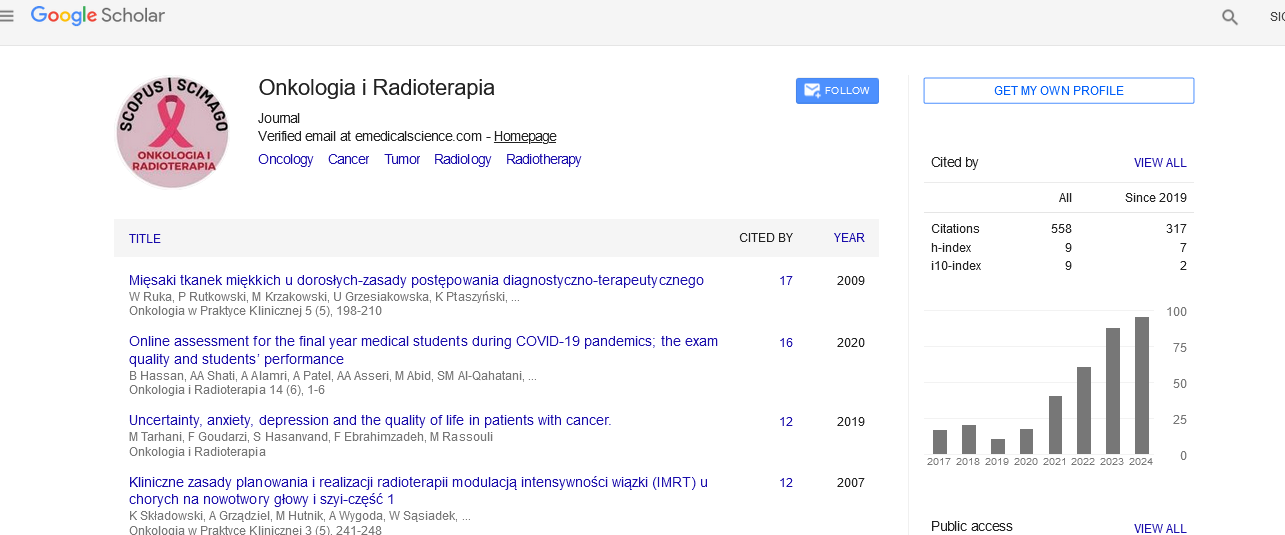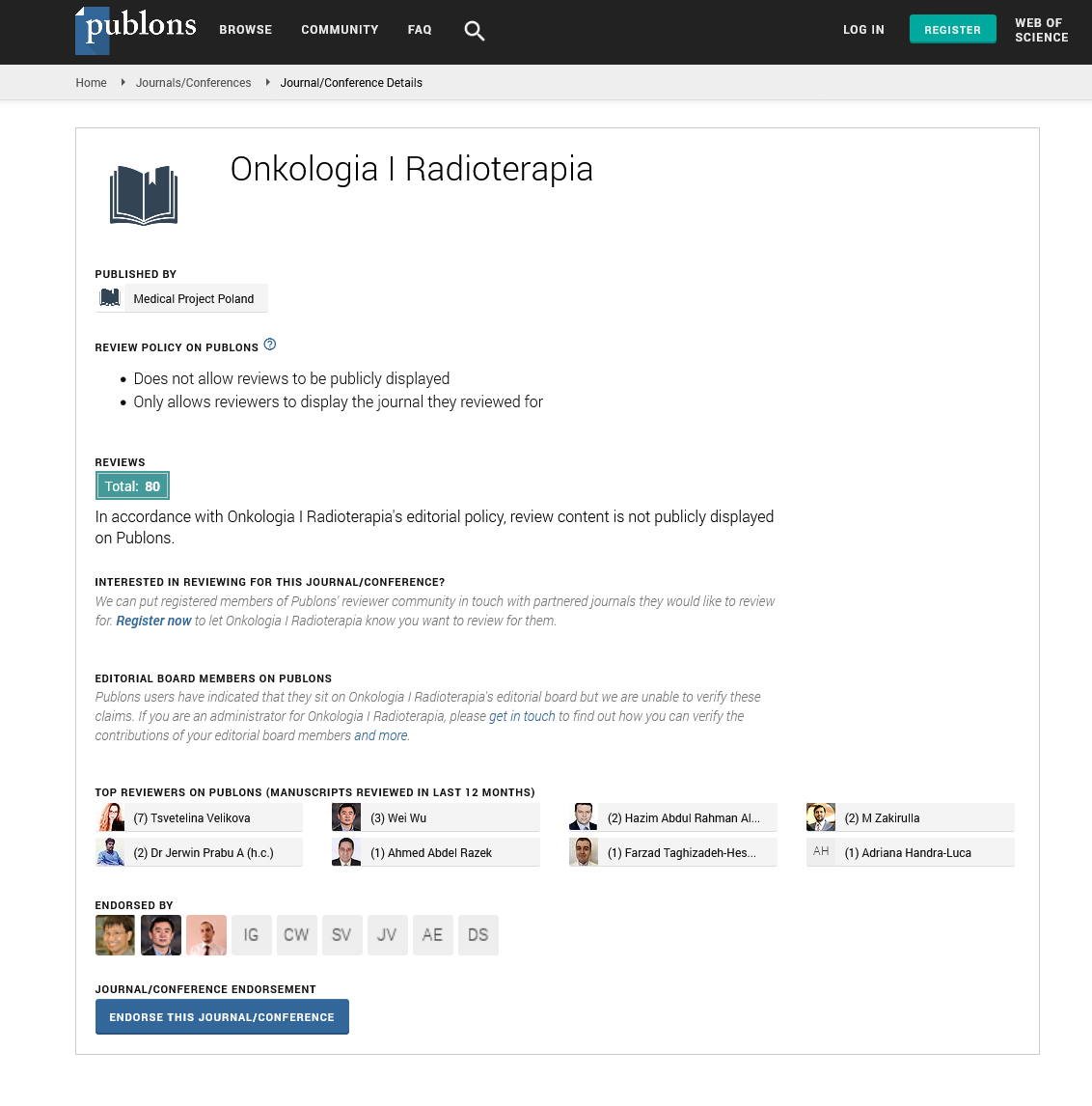Estimation of late normal tissue complication for head and neck cancer patients treated with and without adaptive volumetric modulated arc therapy
Abstract
Author(s): Salam Abdulrazzaq Ibrahim Al-Rawi*, Hassan Abouelenein, Magdy Mohammed Khalil, Haidar Hamza Alabdei, Awf Abdulrahman Sulaiman, Dalya Saad Al-Nuaimi and Mohamed El-Sayed EL Nagdy
Late radiation dose complications in patients with head and neck cancer treated with IMRT or VMAT represent a major problem; some of these complications came from the dose to organs that exceed their tolerance. In our study, patients underwent a new CT after ten and twenty treatment sessions and the initial plan then projected on the new CTs and the plans were called (hybrid plans). In hybrid plans, the dose for all organs was increased compared to initial plan (iplan) and in some cases the dose for organs was greater than their tolerance. The median maximum dose for spinal cord at iplan was 4113 [3967-4254] cGy and significantly increased (p<0.001) at Hplan1 to reach 4390[4154-4587] cGy and significantly increased again (p<0.001) at Hplan2. Also, the median maximum dose for brainstem at iplan was 5156[4561-5324] cGy then significantly increased (p<0.001) to 5321[4688-5545] cGy at Hplan1 and significantly increased again (p=0.001) to 5401[4821-5812] cGy at Hplan2. Other strategy was applied to maintain or decrease the dose to organs by make new plans with new dose constraints at session ten and twenty and called (adaptive plans). With adaptive plans we were able to maintain and reduced the dose for all organs (except for parotid glands). The median maximum dose for spinal cord was significantly reduced (p<0.00) at Aplan1 compared to iplan and another significant reduction at Aplan2 compared to Aplan1 were done (p<0.001). The median maximum dose for optic chiasm at iplan was 4471[863-5198] cGy and then decreased to 4481[740-5118] cGy at Aplan1 (p<0.001) and decreased again to reach 4228[741-5041] cGy (p=0.005) at Aplan2. So, with adaptive plan we were able to reduce dose to organs at risk an maintain the dose for organs below their tolerance and this will decrease the effect of late radiation toxicity complications for patients.
Share this article


Editors List
-
RAOUi Yasser
Senior Medical Physicist
-
Ahmed Hussien Alshewered
University of Basrah College of Medicine, Iraq
-
Sudhakar Tummala
Department of Electronics and Communication Engineering SRM University – AP, Andhra Pradesh
-
Alphonse Laya
Supervisor of Biochemistry Lab and PhD. students of Faculty of Science, Department of Chemistry and Department of Chemis
-
Fava Maria Giovanna
Google Scholar citation report
Citations : 558
Onkologia i Radioterapia received 558 citations as per Google Scholar report
Onkologia i Radioterapia peer review process verified at publons
Indexed In
- Directory of Open Access Journals
- Scimago
- SCOPUS
- EBSCO A-Z
- MIAR
- Euro Pub
- Google Scholar
- Medical Project Poland
- PUBMED
- Cancer Index
- Gdansk University of Technology, Ministry Points 20

